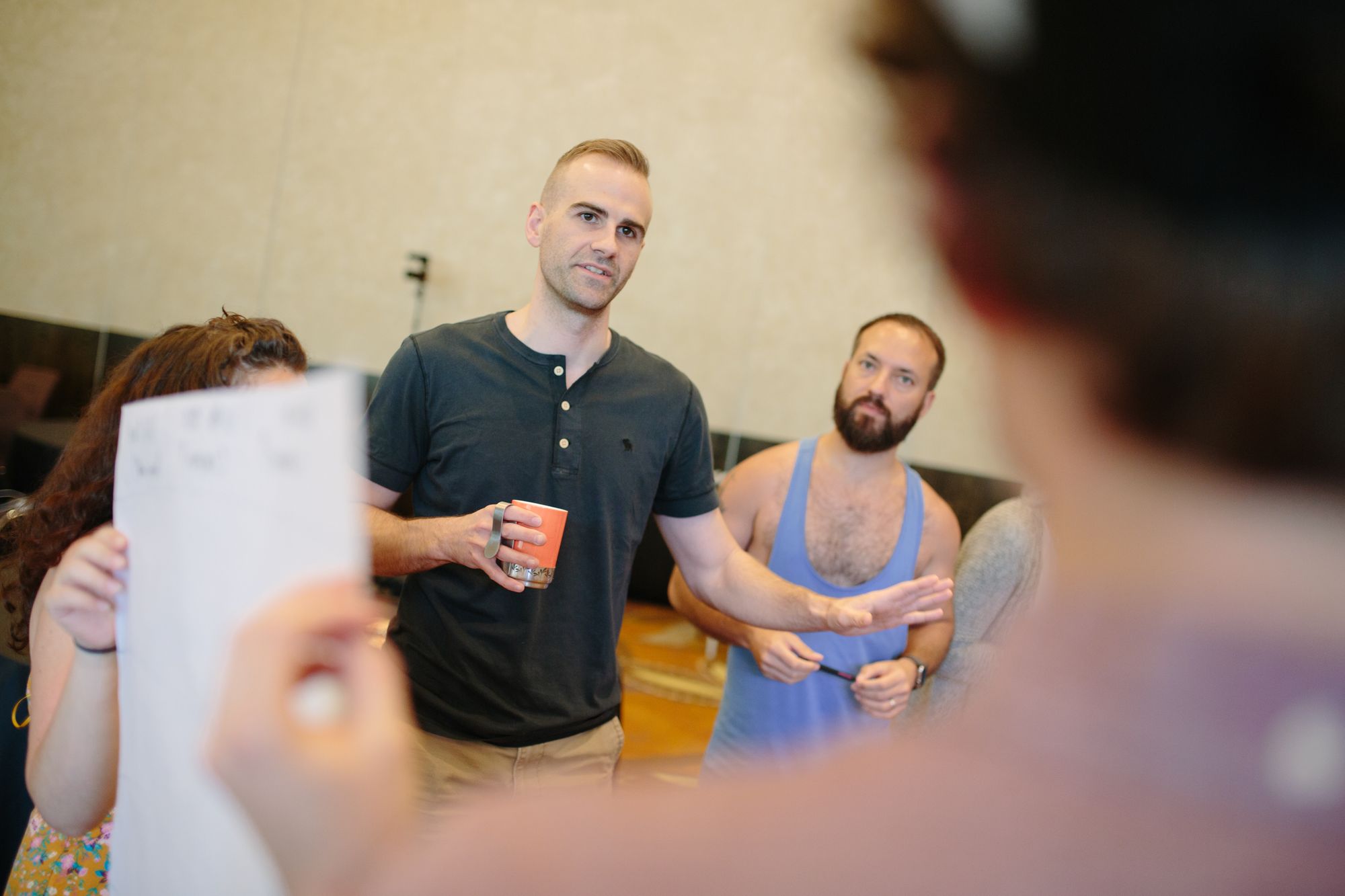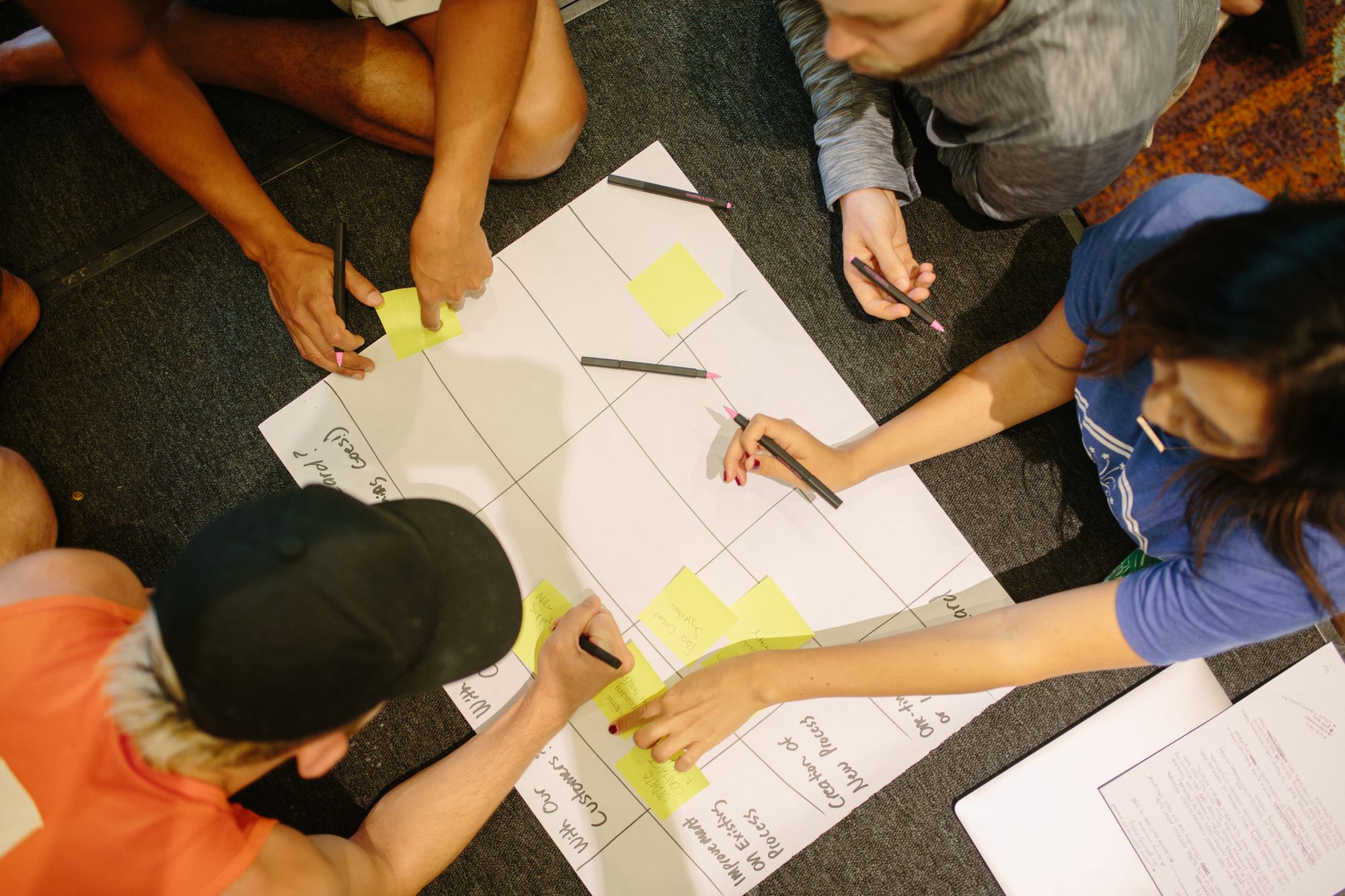
Join us as we share what we’re learning as we build a company that approaches work from a fresh perspective. We write about workplace culture, our finances, and our business decisions and strategies.

Within any company, the organizational chart lives a complicated, contradictory experience. At times, the org chart represents beloved clarity and organization. Other times, it represents rigidity and the tyranny of top-down, hierarchical systems. Organizations often phase out their org charts only to resurrect them again when they find themselves looking for an answer on organization and structure. While some may come back in original form, many companies are looking for new and improved ways

Imagine no longer being able to enjoy time with friends and family, because work is constantly on your mind and your phone is constantly in your hand – and the more you stress, the worse you feel. Or imagine the job you once loved suddenly feeling hollow and pointless, leaving you depressed and constantly fatigued. For a lot of us who feel deeply connected to our work, this is almost unthinkable. But these are some classic signs of burnout, which can lead to serious physical, mental, and s

In mid-2017, I hit burnout in a really big way and wound up taking a 6-week break to recharge. I want to fully share my story here and include some things I wish I’d done differently in the hope that this can help anyone else experiencing burnout. How it began: A year of change, stress, and loss Looking back, the lead-up to my burnout goes back to the end of 2015. My co-founder and I were growing apart on our vision for Buffer’s future, which continued throughout 2016 despite several in-perso

Thanks for reading our equal pay report. See our updated 2021 pay analysis here. Progress seldom looks like the straight line we all wish it might. Real life is much messier, filled with false starts, mistakes, and backtracks. That’s an especially tough truth when it comes to issues like the gender pay gap that affect real people’s lives so deeply. But in advance of this year’s Equal Pay Day, Buffer has a progress story to tell – and it looks nothing like a straight upward line. What is E

There was a time where I wholly embraced calling our team — our company — a family. I’ve written cards to our community members and called them part of our Buffer family. I’ve sent custom packages to welcome our new teammates to the Buffer family (and we’ve grown from 25 teammates to nearly 90 in about four years.) I relished how the term “family” made everyone feel so welcomed, accepted, and appreciated. There’s nothi

Hi there! This is an out of date post that we’ve kept around for transparency purposes. Go here to view the latest version of this post or view our salaries page . We live in a world where things are constantly changing, and Buffer is no exception, especially when it comes to how we pay our team! It’s been over five years since we first introduced transparent salaries and a salary formula [https://buffer.com/resou

The concept of a career path at Buffer has changed a lot over the past seven years. We’ve gone through various phases as an organization: beginning as an early-stage startup where everyone did a bit of everything, then to a period when we decided against having managers and leaned into a flat structure , and now to a lean level of management

Experimentation and iteration lie at the heart of a lot of things we do at Buffer. If you’ve been following the Open Blog for some time, or even if you’ve just popped by (hey there!), you might notice that we reflect on remote work–a lot . Our remote setup enables our distributed team to work wherever they’re happiest and that freedom is a much-valued perk that Buffer teammates enjoy. Our employees feel trusted to be in control of their job, and for us, we

We hope you’ve had a great year. We’ve had a lot of fun here at Buffer , and have learned a lot while serving our customers and building our business this year. And, as always, we’ve done our best to capture all these learnings here on the Open blog to share with you. Thinking about all that’s happened here over the last year, several key moments stand out. We’d love to look back with you on some of the biggest Open blog posts from 2018

Here at Buffer, we believe that what gets measured, gets managed. That’s important because with effective management and oversight, we have the tools and knowledge to effectively make change happen. But how do you measure an emotion? Certainly, you may notice the signs of an emotion like happiness trending up or down. When it’s trending downward, you’ll notice that productivity wanes, morale decreases, and people leave for other jobs. And when it’s tre

One of our favorite year-end activities — and one of our favorite everyday cultural values — is to pause and reflect on all that we’ve seen and done at Buffer over the past twelve months. (You can check out our reflections on the past two years: 2017 and 2016 .) We’ve done the same year-in-review again for 2018 , and having gathered this data for three years in a row now, we are able t

Growing pains. Every company gets them, and the pains come in all sorts of ways, from the tactical (tools ) to the philosophical (this post). As your company grows, some of your team members may feel like they have less impact. You may find it harder to set accountabilities and goals. Things can start to feel “top down.” We find ourselves dreaming about being empowered, making our own decisions, and setting our own goals. Wouldn’t it be nice to ma

Among the many existential questions of building and distributing software is the question of product marketing. What even is product marketing? Is it launching new products and features? Is it finding ways to increase product adoption? Is the goal of product marketing to offer customer education, retention, activation, or engagement? All of the above? Product marketing can mean various things in different company contexts, which makes it hard to find

When you experiment with work culture as much as we do at Buffer, you tend to receive a lot of questions about it. What is it like to work remotely? How do you collaborate across time zones? Do people really feel okay making their salaries public? Can you become friends with teammates when you’re not in an office? Do you miss working in an office? Do you basically live in pajamas? (Quick answer to that one: not usually, though I definitely have spent a work day or two in pajamas!) These qu

Almost two years ago, I fell into becoming a manager . In my past career, I never thought that this would happen. Most of my life I’ve been a maker: working as an engineer, solving technical problems and building apps, products, or just circuit boards. People management was a huge change. I learned a lot of things the hard way through trial and error, success and failure — but also by reading a lot [https://buffer.com/resources/how-to-read-more-a

Having managers isn’t something we do at Buffer just because it’s what other companies usually do. We’ve always been proud to be different and to follow the path less travelled — even when it comes to people management. Over the past few years, we’ve tried it all: from experimenting with full self-management (no managers) to having leads and managers supporting our team [https://bu

With transparency in business on the rise, more and more businesses have been talking openly about their hiring, their diversity and inclusion efforts, and even their revenue. Transparency is more than just a PR or marketing ploy for a business. There are significant advantages to productivity, trust, culture, and morale when you embrace transparency. We are fortunate to have been learning about transparency for the past seven years at Buffer — lots of lessons, good and bad, that we’re ex

Can you tell when you’re talking to someone from Buffer ? Absent any Twitter handle or an email “From” name or other identifying element, if you were essentially Internet-blindfolded, could you distinguish between a conversation with one brand versus another? If so, what a powerful impact that brand must have! We’d love to cultivate this type of unified voice and style at Buffer. As part of that journey, we created a company-wide content style guide as a resource on communi

For the past year, my team and I have been building a brand new social analytics solution within Buffer called Buffer Analyze. We’ve done our best to distill research, data, and intuition into a lean, lovable solution, and we’ve been fortunate to find early signs of product/market fit. (Currently, the Analyze beta is open to Buffer for Business customers. You can learn more about Analyze’s social analytics features here [https://buffer.com/analyze?utm_source=open-b

Diversity and inclusion is one of the most important areas for us as we grow our company. We’d love to help others embrace it as well. In addition to all the benefits we’ve seen — innovation, product quality, unique perspectives, team morale, success — we believe in diversity and inclusion because it is the right thing to do and is the type of future we want to build toward. This article contains a lot more detail on the subject as well as specific strategies and tactics that you can imple

Highlights: * We spent $93,653 in August 2018 * We spent $3,041 on ads. We budget $4,000 per month (total!) * We spent $3,151 on software tools (our stack includes 28 paid tools) * Grab your free marketing budget template Tweet this ☝️ When I first started managing our marketing budget, I was a bit over my head. To put it mildly. What software were we actually spending money on? I didn’t know. What made sense for a monthly ad spend? Not sure. How much should we budget for the followi

As a globally distributed team , one of the most interesting things to experiment with is how we collaborate and innovate when we’re all spread out. A couple weeks ago, we tried out that stalwart of engineering innovation – the hackathon! In researching hackathons, it was clear we needed to rethink a lot of the traditional structure … particularly this: As a remote team, we couldn’t all be in a room together, ordering in food and grouping around a laptop.

Imagine a world without Slack .. Weeping, mourning, and gnashing of teeth, right? Slack is a ubiquitous part of so many workplaces. The real-time messaging and communication app has become the go-to for so many remote workplaces , distributed teams, and offices. Buffer , included. It’s also been a point of contention in our always-on, always-connected “alerts” culture. Are we too reliant on Slack? Many [https

Buffer is a fully remote team . It’s a decision I made at the end of 2012, when Buffer was in its infancy, and it’s interesting to reflect on that decision now. I am happy to report that I am in love with the choice we made to be distributed all across the world. When I say that we’re a remote, distributed team, I mean that we’re literally spread across the whole world. Buffer is a team of 79 right now , and we have teammates on a